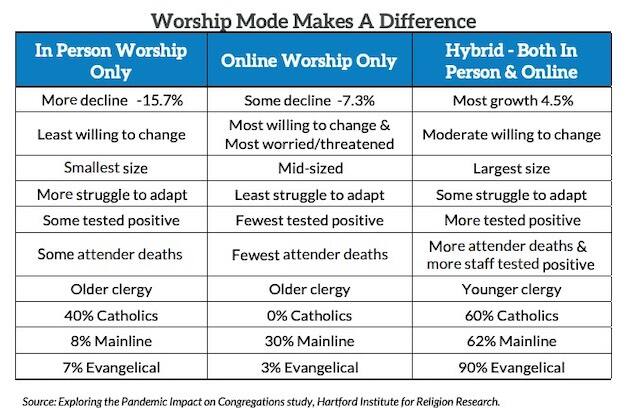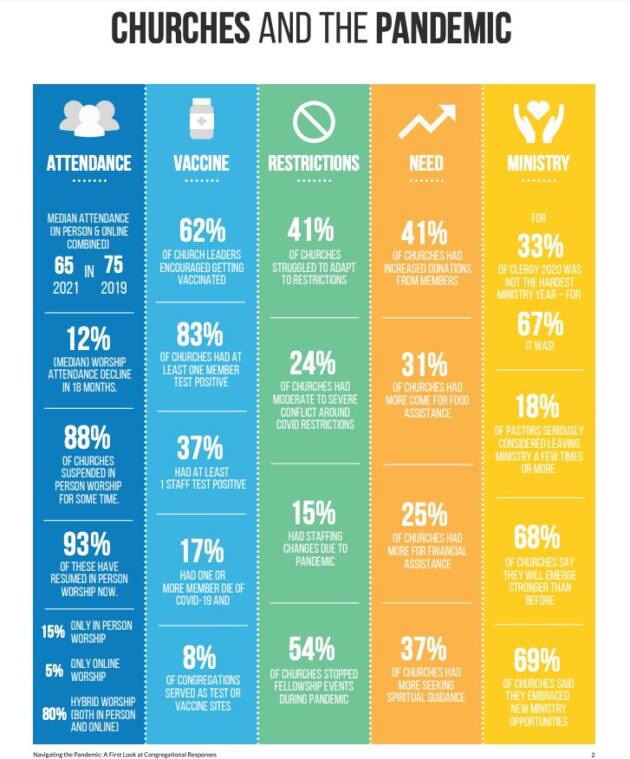Although the pandemic is over, churches are still trying to understand its long-term impact. A comprehensive report from the Hartford Institute for Religion Research documents many of the positives and negatives.
On the positive side, attendance is on the rise among Christian denominations, although it is still generally below pre-pandemic levels. Before COVID-19, worship attendance had a median of 65 people but is now down now down to 60. However, when accounting for people watching virtually, total worship attendance jumps to a median of 75, which is above the 65 observed before the pandemic.
Another positive finding surrounds income and money coming into churches. The average median income for a church in 2020 was $120,000, but that number has grown to $170,000 — a 42 percent increase — over the past three years. “Even adjusting for inflation, this still represents a remarkable increase of over 25 percent since 2020,” the report said.
Despite these positive findings, the data also point to several challenges. One key area of concern is attendance and membership. Already an issue before the pandemic, it’s unclear what the full impact of COVID-19 will be in this area.
“One-third of the 4,809 churches indicate they have grown in attendance since 2020, while just over 50 percent report a slight or severe decline from where they were pre-pandemic,” the report said. “This latest survey shows a slight increase of 3 percent for churches in the ‘much decline’ category (those showing a decline of more than 25 percent from their pre-pandemic attendance), with corresponding declines in a few of the other categories.”
Another preexisting issue was the age of congregants and pastors. In 2020, the average age of a senior church leader was 57 years old, with that number ticking up to 59 in 2023. Plus, the average percentage of church members over the age of 65 increased from 33 percent in 2020 to 36 percent in 2023. These aren’t massive jumps, but they are notable statistics considering concerns over the decrease in young people entering the church.
Perhaps the most notable change to be observed among U.S. churches, though, centers on the use of technology. With COVID-19 demanding many stay home and social distance, churches were forced to quickly innovate and make worship services available virtually.
“Churches may not be back yet to a state of normalcy and settledness,” the report concluded, “but they are further along this path than they have been in the last two years.”
–Alan Goforth | Metro Voice
 Metro Voice News Celebrating Faith, Family & Community
Metro Voice News Celebrating Faith, Family & Community










